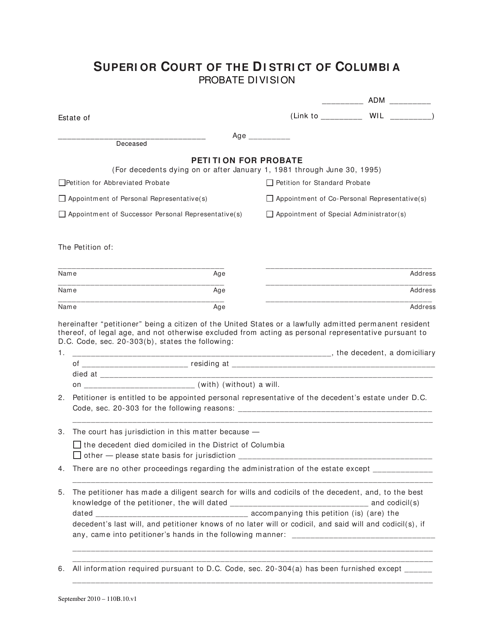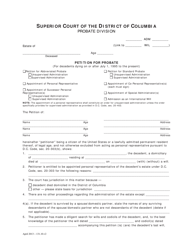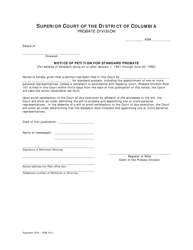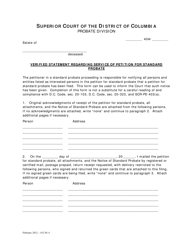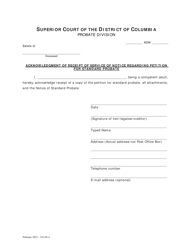Petition for Probate (For Decedents Dying on or After January 1, 1981 Through June 30, 1995) - Washington, D.C.
Petition for Probate (For Decedents Dying on or After January 1, 1981 Through June 30, 1995) is a legal document that was released by the District of Columbia Courts - a government authority operating within Washington, D.C..
FAQ
Q: What is the Petition for Probate?
A: The Petition for Probate is a legal document filed in court to begin the process of settling the estate of a deceased person.
Q: Who can file a Petition for Probate?
A: The Petition for Probate can be filed by the executor named in the decedent's will or by an interested party.
Q: When can a Petition for Probate be filed?
A: The Petition for Probate can be filed for decedents who passed away between January 1, 1981, and June 30, 1995.
Q: What is the purpose of the Petition for Probate?
A: The purpose of the Petition for Probate is to initiate the probate process and appoint an executor to manage the estate.
Q: What information is required in the Petition for Probate?
A: The Petition for Probate requires information about the decedent, the executor, the assets and debts of the estate, and the beneficiaries.
Q: Are there any fees associated with filing the Petition for Probate?
A: Yes, there are filing fees associated with filing the Petition for Probate. The exact fee amount can be obtained from the Superior Court of Washington, D.C.
Q: Is legal representation required to file the Petition for Probate?
A: While legal representation is not required, it is recommended to seek legal advice when filing the Petition for Probate to ensure compliance with the probate laws.
Q: What happens after the Petition for Probate is filed?
A: After the Petition for Probate is filed, a hearing will be scheduled, and notice will be given to interested parties. The court will then review the petition and appoint an executor, if appropriate.
Q: How long does the probate process take?
A: The duration of the probate process can vary depending on the complexity of the estate. It can take several months to a year or more to complete.
Form Details:
- Released on September 1, 2010;
- The latest edition currently provided by the District of Columbia Courts;
- Ready to use and print;
- Easy to customize;
- Compatible with most PDF-viewing applications;
- Fill out the form in our online filing application.
Download a fillable version of the form by clicking the link below or browse more documents and templates provided by the District of Columbia Courts.
